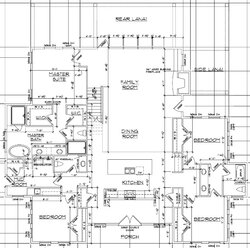
Good morning all.
I am inquiring to the experts in regards to the installation of an outside air kit for a Lopi Endeavor that will be installed in an alcove type installation. I will be using double wall pipe with (1) 90 degree elbow placed approximately 8 ft above the stove that goes to a T w/ cleanout, that connects to double wipe pipe again to go up another approximately 11 1/2 ft. I have read the many varied opinions on outside air kits, and feel like w/ our construction it may be a necessity. We are doing a fairly tight construction. Slab on grade w/ well rated windows. They are a hybrid w/ wood interior, vinyl frame, and aluminum clad exterior. We will be using open cell spray foam insulation for the exterior walls and ceiling.
My question is two fold. (1) am I correct in assuming that this a good fit for an OAK. (2) is there a better location for the OAK to vent to on the side porch. The side lanai faces northwest.
Middle west Georgia area southeast US.
Last edited by a moderator:

